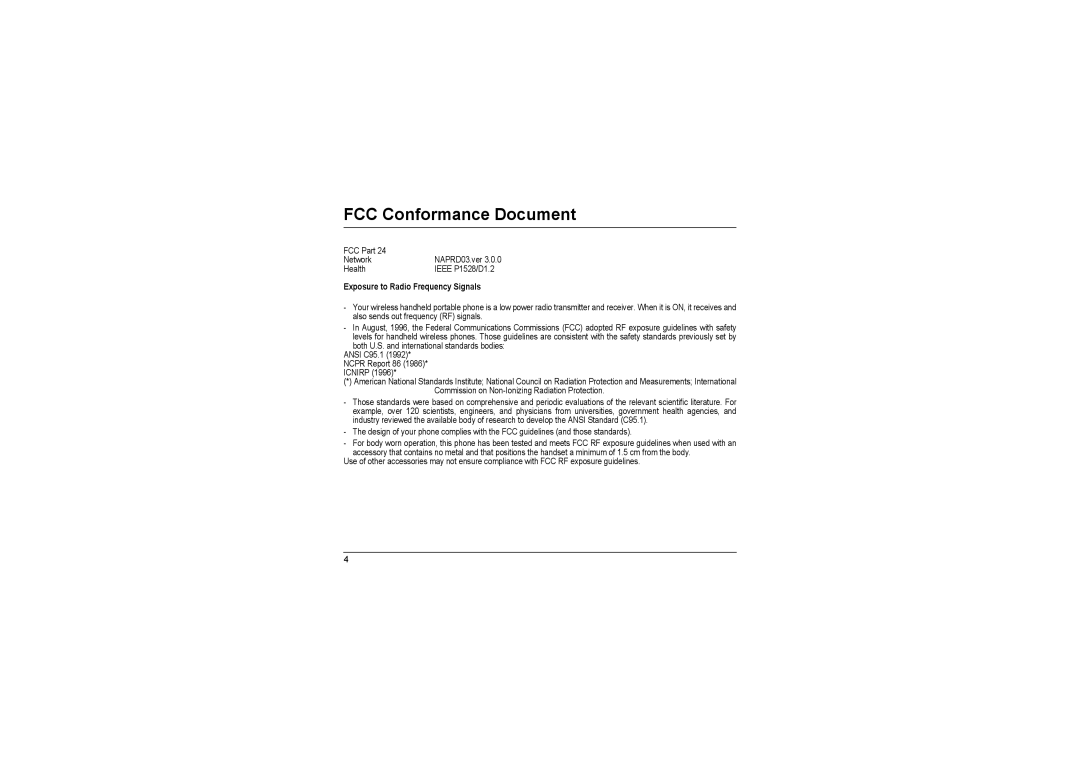
FCC Conformance Document
FCC Part 24 |
|
Network | NAPRD03.ver 3.0.0 |
Health | IEEE P1528/D1.2 |
Exposure to Radio Frequency Signals
-Your wireless handheld portable phone is a low power radio transmitter and receiver. When it is ON, it receives and also sends out frequency (RF) signals.
-In August, 1996, the Federal Communications Commissions (FCC) adopted RF exposure guidelines with safety levels for handheld wireless phones. Those guidelines are consistent with the safety standards previously set by both U.S. and international standards bodies:
ANSI C95.1 (1992)*
NCPR Report 86 (1986)*
ICNIRP (1996)*
(*)American National Standards Institute; National Council on Radiation Protection and Measurements; International Commission on
-Those standards were based on comprehensive and periodic evaluations of the relevant scientific literature. For example, over 120 scientists, engineers, and physicians from universities, government health agencies, and industry reviewed the available body of research to develop the ANSI Standard (C95.1).
-The design of your phone complies with the FCC guidelines (and those standards).
-For body worn operation, this phone has been tested and meets FCC RF exposure guidelines when used with an
accessory that contains no metal and that positions the handset a minimum of 1.5 cm from the body. Use of other accessories may not ensure compliance with FCC RF exposure guidelines.
4
